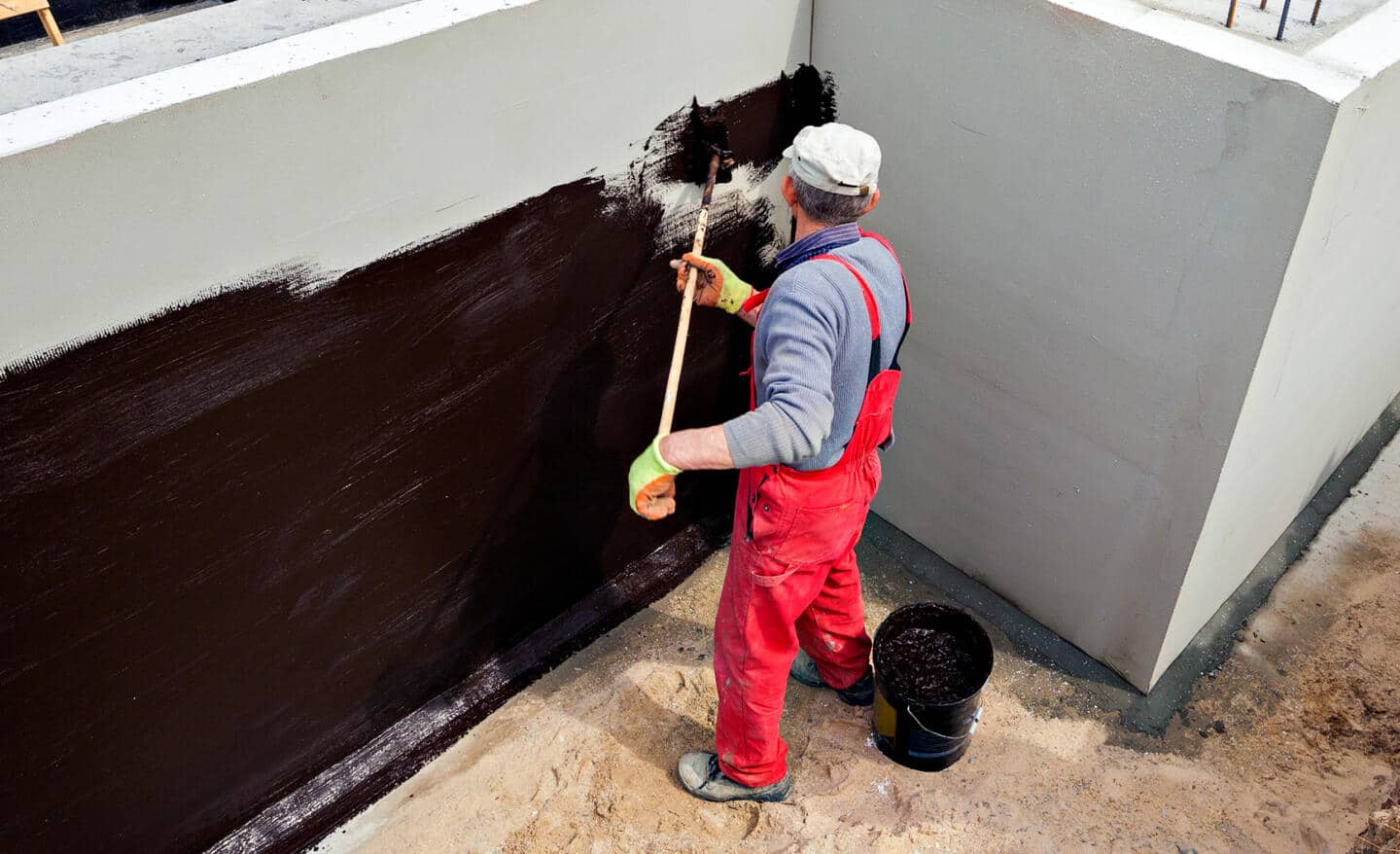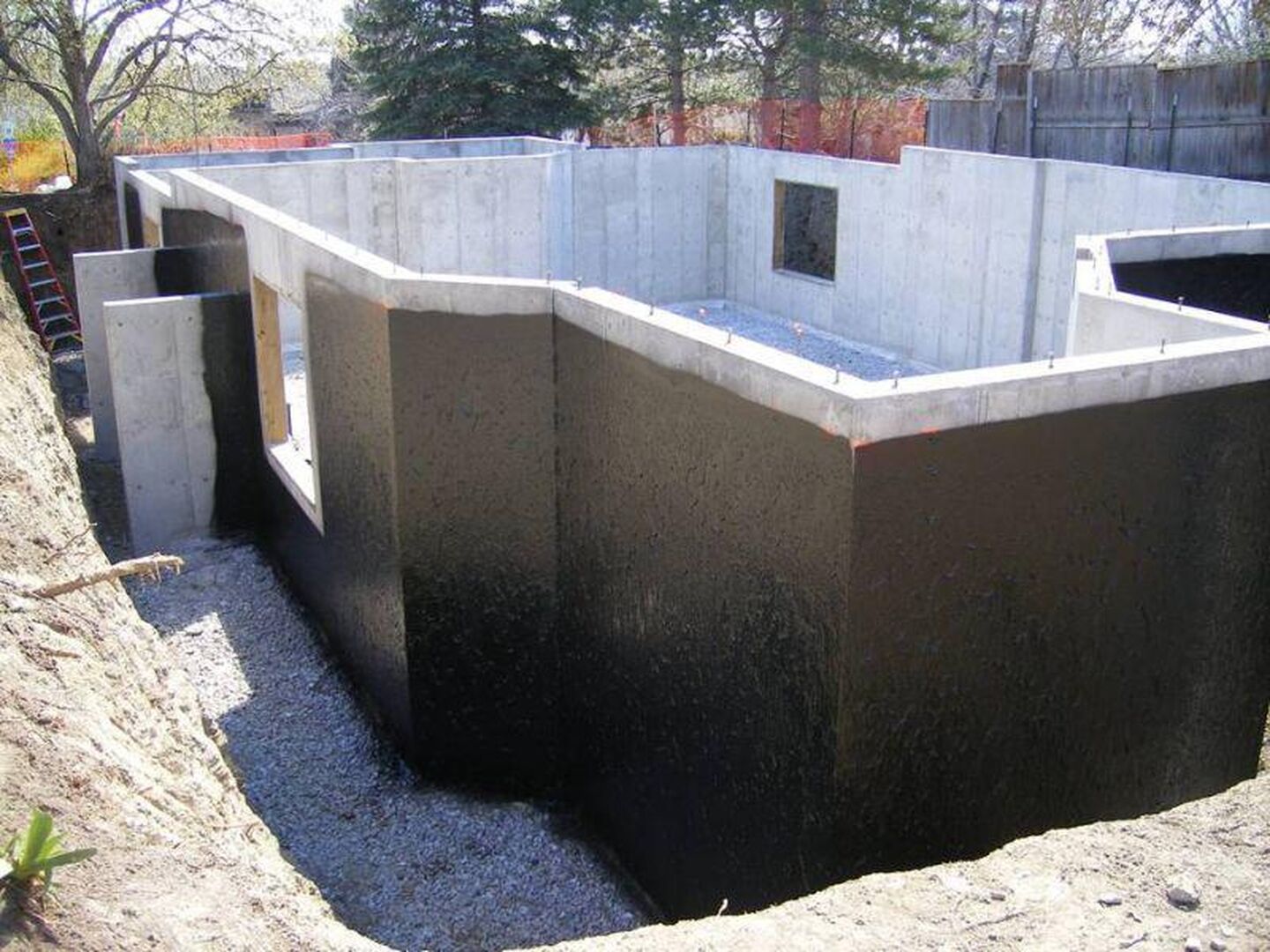
Everything about Waterproofing: Recognizing Its Significance and Advantages for Your Home
Waterproofing is a necessary element of home upkeep that lots of property owners neglect. It offers to secure structures from the harmful effects of water seepage, which can lead to significant problems over time. Understanding the various approaches and their relevance can aid homeowners make notified decisions. As the discussion unfolds, the real concern remains: just how can effective waterproofing change a home's durability against moisture-related hazards?
What Is Waterproofing and How Does It Function?
Waterproofing is an essential process created to shield buildings and frameworks from water seepage. It includes the application of numerous products and methods that produce an obstacle, stopping water from passing through surfaces. Common waterproofing approaches include the usage of membrane layers, finishings, and sealers, which can be put on roofings, foundations, and wall surfaces. Each approach is chosen based on the particular needs and conditions of the structure.The effectiveness of waterproofing depends on appropriate installation, making certain that all locations are adequately covered and secured. Materials such as bituminous membrane layers, liquid waterproofing substances, and cementitious finishings are often used, each offering special benefits. In addition, drain systems may be incorporated to redirect water away from susceptible locations, better enhancing defense. Generally, waterproofing not only safeguards architectural stability yet likewise enhances longevity, making it an essential consideration in building and construction and renovation projects.
The Importance of Waterproofing for House owners
Property owners face countless obstacles in preserving their properties, and one of the most significant concerns is water damages. This concern can develop from different sources, including hefty rainfall, flooding, and plumbing failures. When left unaddressed, water damages can bring about extreme structural problems, mold development, and pricey repair work. Waterproofing stands as an essential preventive procedure that safeguards homes from these possible dangers.
Common Waterproofing Approaches and Strategies
When thinking about waterproofing techniques, house owners can pick from a range of effective solutions. Outside waterproofing remedies concentrate on protecting against water from penetrating the framework, while interior waterproofing strategies deal with wetness concerns once they have happened. Recognizing these options is necessary for keeping a dry and healthy home atmosphere.
Outside Waterproofing Solutions
To secure a home from water breach, various exterior waterproofing options can be utilized, each customized to the details needs of the framework. One common approach is the application of water resistant membrane layers, which create a barrier versus moisture. These membrane layers can be either liquid-applied or sheet-based, relying on the setup demands. One more effective method entails making use of drainage systems, such as French drains, that redirect water far from the structure. Additionally, applying outside sealers can help safeguard surfaces from water penetration and rust. Landscape design solutions, including grading and appropriate drainage, can likewise add notably to stop water buildup around the foundation. Each of these approaches plays an essential role in enhancing the longevity and longevity of the residential property.
Inside Waterproofing Techniques
Interior waterproofing methods are crucial for guarding a home versus dampness and water damages. Typical approaches consist of the application of sealants and membrane layers, which create an obstacle on wall surfaces and floors to avoid water infiltration. Inside water drainage systems, such as sump pumps and French drains pipes, successfully reroute water far from at risk locations. Additionally, vapor barriers can be mounted to obstruct wetness from penetrating via wall surfaces and floorings, specifically in basements and crawl areas (Foundation waterproofing Omaha). Normal upkeep and assessment of these systems are essential to guarantee their efficiency. Addressing any pipes leakages or condensation issues immediately can substantially boost the overall waterproofing strategy. Together, these strategies offer house owners with an extensive technique to decreasing the risk of water-related problems

Indicators Your Home Requirements Waterproofing
House owners must recognize crucial indicators that their building might require waterproofing. Visible water damages, musty smells, and regular mold and mildew growth are critical indicators that dampness is endangering the stability of the home. Addressing these issues quickly can stop more damage and guarantee a much healthier living setting.
Noticeable Water Damage
Visible water damages acts as a clear sign that a home may need waterproofing steps. House owners ought to be alert for indications such as water spots on walls or ceilings, peeling off paint, and distorted flooring. These visible symptoms often indicate underlying wetness issues that, if left unaddressed, can bring about much more substantial damages and expensive repair services. Mold growth can likewise occur, though it will certainly be reviewed in the following section. Furthermore, homeowners ought to check cellars and crawl areas for wetness or efflorescence on concrete surface areas, which indicates wetness infiltration. Observing these indicators early can help prevent better deterioration of the home's structural honesty. Prompt waterproofing measures can safeguard the investment and maintain a healthy and balanced living atmosphere.
Musty Odors Existing
Moldy odors are usually a dead giveaway that dampness is remaining in hidden areas of a home, showing the demand for waterproofing options. These undesirable smells often emerge from damp cellars, crawl spaces, or behind wall surfaces, where water seepage might not be promptly visible - Water Solutions. Property owners ought to pay attention to these smells, as they recommend that excess moisture is caught, potentially causing further damage. The visibility of stuffy scents can endanger interior air quality, affecting the health and convenience of locals. Neglecting this warning indication can lead to a lot more severe concerns, making punctual analysis and activity vital. By resolving waterproofing requirements, home owners can eliminate stuffy smells and create a healthier living environment
Regular Mold Development
Regular mold and mildew growth is a clear indication that a home might be experiencing wetness issues, necessitating waterproofing actions. Mold grows in damp environments, making it a significant issue for homeowners. Signs of mold can include dark areas on wall surfaces, ceilings, and around windows, along with a consistent moldy smell. If mold appears repeatedly despite cleaning initiatives, it suggests underlying moisture issues. This can result from leakages, inadequate drainage, or high moisture degrees. Neglecting these indicators my response can result in structural damages and health dangers, specifically for individuals with breathing problems. As a result, addressing waterproofing immediately can aid mitigate mold growth, guaranteeing a much safer and healthier living atmosphere. House owners must take into consideration professional evaluations to figure out the level of the moisture problem.
The Long-Term Benefits of Buying Waterproofing
Buying waterproofing uses property owners a profound sense of safety and satisfaction, recognizing their residential or commercial property is safeguarded versus moisture-related damages. This aggressive method considerably reduces the danger of structural issues, such as wood rot and foundation splits, which can result in expensive fixings in time. Furthermore, waterproofing helps preserve interior air top Read Full Report quality by minimizing mold and mildew development, which can have negative wellness implications for occupants.Furthermore, waterproofing boosts the toughness of a home, ultimately preserving its value. A well-protected residential property is more appealing to possible customers, as they are much less likely to experience surprise moisture issues. This investment also contributes to power effectiveness; effectively secured spaces protect against drafts and decrease cooling and heating costs. Overall, the long-term advantages of waterproofing not only ensure the structural stability of a home yet additionally foster a much healthier living atmosphere and boost the property's marketability.
Picking the Right Waterproofing Expert for Your Home
Exactly how can a home owner assurance they choose the most certified waterproofing professional for their requirements? The procedure starts with extensive study and obtaining numerous quotes. Homeowners should seek professionals with a solid track record, validated credentials, and substantial experience in waterproofing. Examining on the internet testimonials and requesting references can give useful insight into a contractor's dependability and high quality of work.Moreover, it is vital to ask about the particular waterproofing techniques each professional utilizes, as well as the materials used. House owners should confirm that the selected service provider is certified and guaranteed, which safeguards against possible responsibilities. A reliable professional will also use a thorough contract outlining the extent of work, timeline, and guarantee information. By concentrating on these requirements, home owners can make educated decisions, inevitably leading to boosted protection versus water damages and a reliable waterproofing option customized to their home's needs.
Regularly Asked Concerns
Can Waterproofing Be Carried Out In Winter Season or Cold Weather?
Waterproofing can be testing throughout winter months or winter as a result of reduced temperatures impacting products' bond and healing procedures. Nevertheless, specialized items made for cool problems can allow successful waterproofing applications also in cold weather.
How Usually Should I Water Resistant My Home?
The regularity of waterproofing a home commonly depends on different elements, including environment and material high quality. Experts advise evaluating conditions annually and reapplying every five to 10 years, or faster if substantial wear appears.
Does Waterproofing Affect Home Resale Value?
Waterproofing can significantly influence a home's resale value (Sump pump discharge drainage Omaha). Possible purchasers frequently check out waterproofing as a secure versus water damages and mold, boosting the property's charm and bankability, potentially resulting in greater deals and quicker sales
Is DIY Waterproofing Effective for All Houses?
The effectiveness of do it yourself waterproofing differs by home. Aspects such as building Extra resources age, environmental conditions, and existing damages impact results. Home owners need to evaluate their particular circumstances prior to trying do it yourself solutions to guarantee long-lasting protection.

Are There Eco-Friendly Waterproofing Options Available?
Green waterproofing alternatives do exist, including all-natural sealers like beeswax and plant-based products. These solutions reduce environmental impact while efficiently protecting structures from water damages, attracting homeowners seeking lasting choices for their waterproofing requires.